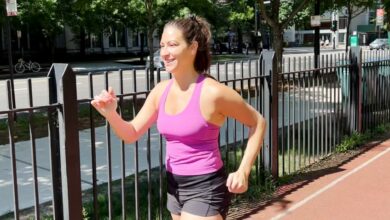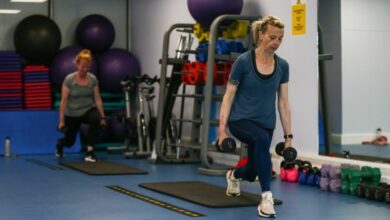
It’s stressful handling multiple priorities and trying to fit exercise into your busy schedule. Fortunately, all you may need to do is squeeze in a brisk, half-hour walk daily.
Brisk walking involves moderate-intensity exercise. To get a feel for the pace, you should be able to talk while walking, but not sing.
Mona Abaza, internal medicine consultant, shines a spotlight on the physical as well as emotional benefits of brisk walking and how to get the most out of your physical activity time, in accordance to your bodily needs.
Benefits:
Working out does not necessarily need to be done for long periods to make a difference to your fitness and body shape. Sticking to a walking plan on a daily basis, or at least three times a week, is what really counts.
Brisk walking is a total body exercise that makes it one of the most effective forms of physical activities for everybody, especially people who are older or overweight.
Regular walking can lower low-density lipoprotein cholesterol (the bad type) and raise high-density lipoprotein cholesterol (the good type). This decreases the risks of developing cardiovascular diseases, as walking burns fat and sheds weight in a healthy manner.
Additionally, allowing muscle movement is useful for lowering blood pressure levels. Walking pumps blood into the body, which improves blood flow, redirecting blood to the brain. Low blood pressure levels protect against hypertension and maintain kidney function.
Improving both muscular strength and endurance are among the positive effects of walking. Strengthening your muscles means strong bones, better posture and lower risk of injury.
Brisk walking has psychological benefits as well. It improves mental sharpness as a result of boosting your mood, relieving anxiety and lowering rate of depression.
During exercise, your body releases endorphins, which are chemicals in the brain that reduce perception of pain and allow a feeling of relaxation.
Before you start:
Make sure to put on your comfortable sneakers before you hit the road to avoid foot pain. Wear light and cotton clothes to keep you cool, especially if you are working out in summer. Drink fluids during and after your exercise to replace water lost in sweat.
Getting started:
Start at a slow pace for about five minutes, or until you feel that your body is getting warm and your heart rate is ready to intensify your workout. However, you should try not to push yourself, particularly if you experience irregular heartbeats.
For those who haven’t exercised for a long time, go easy on yourself. You can kick off your walking routine with short sessions of five to 10 minutes. As your fitness improves, build up your endurance and gradually increase your intensity and stamina.
Wrap up your workout by slowing down your pace once again to give the muscles a chance to cool down. Additionally, practice some stretching exercises to enhance flexibility and loosen your muscles.
Consult a doctor:
For older people and those who suffer chronic or severe diseases, including cardiovascular ones, it is a must to check with a doctor before starting in any exercise regimen. Discuss if you need to follow a specific workout program tailored to your medical condition and personal needs.
This piece was originally published in Egypt Independent's weekly print edition.




